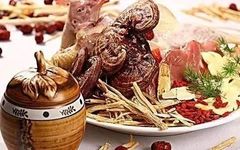Medicinal cuisine, as the name suggests, is a dietary method that combines medicine and food, guided by the fundamental theories of Traditional Chinese Medicine (TCM). Its purpose is to balance the body’s yin and yang, replenish qi and blood, enhance the body’s immunity, eliminate diseases, and promote health and wellness.
The development of medicinal cuisine in China has a long history, making it one of the earliest countries to adopt medicinal cuisine as a means of health preservation. This is well-documented in classical medical texts such as the Shijing (Book of Songs) and the Huangdi Neijing (Yellow Emperor’s Inner Canon).
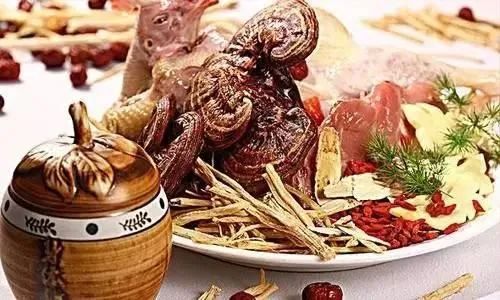
Historically, the concept of “medicine and food sharing the same source” has been prevalent in China. It is said that primitive people, during the process of gathering food, gradually discovered that certain foods could treat diseases. Consequently, they purposefully separated these foods to use them as medicinal substances, leading to the initial emergence of medicinal cuisine.
Since the Western Zhou period, medicinal cuisine has become an independent branch of medicine, managed by food physicians. As recorded in the Rites of Zhou, it states: “Two food physicians are responsible for the six foods, six drinks, six dishes, a hundred delicacies, a hundred sauces, and the eight treasures.” The term “齐” (qi) in the text is an ancient term for “剂” (ji), referring to the preparation of medicinal food.
However, due to limitations in available ingredients, the promotion and application of medicinal cuisine among the populace were not smooth, significantly restricting its development and inheritance.
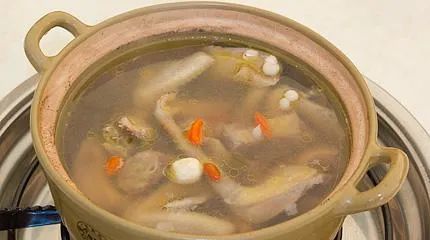
During the reign of Emperor Wu of the Han Dynasty, Zhang Qian was sent to the Western Regions, opening the famous Silk Road, which connected China to Central Asia, West Asia, South Asia, and even Europe. Through trade, Zhang Qian brought back many foreign species, such as pomegranates, walnuts, cucumbers, alfalfa, coriander, watermelons, garlic, and figs. These were introduced and quickly enriched the ingredients available for medicinal cuisine, providing new content for it. Consequently, many medicinal food plants were added to the Shennong Bencao Jing (Shennong’s Classic of Materia Medica), broadening the scope for medicinal cuisine.
Notable physicians like Zhang Zhongjing developed effective medicinal dishes such as Zhufu Tang (Pig Skin Soup) and Danggui Shengjiang Yangrou Tang (Angelica and Ginger Lamb Soup), which are still widely used today.
During the Three Kingdoms period, it is said that Cao Cao also researched medicinal cuisine and personally authored the Four Seasons Imperial Food Regulations. Throughout the Wei, Jin, Southern and Northern Dynasties, and even the Sui Dynasty, the integration of medicine and food became a trend, with numerous writings on medicinal cuisine. According to the Book of Sui, there are 48 volumes dedicated to recipes, cooking methods, and dietary principles.
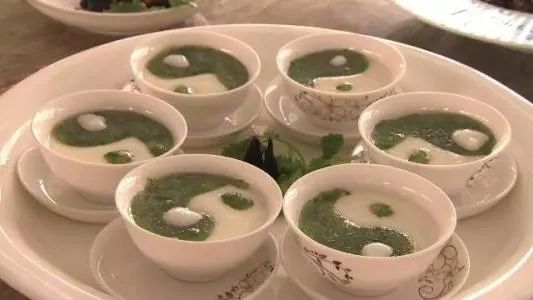
By the Tang Dynasty, medicinal cuisine had developed into a distinct discipline. It began to be categorized. The renowned “Medicine King” Sun Simiao’s work, Qianjin Yaofang (Essential Prescriptions Worth a Thousand Gold), opened a dedicated section on dietary therapy, categorizing fruits, vegetables, grains, and animal products into four categories, totaling 162 types.
Contemporary physician Meng Shen authored Shiliao Bencao (Materia Medica of Dietary Therapy), which is a specialized work on dietary therapy. This book details the medicinal properties of food and medicine, collecting 241 types of medicinal foods and documenting their preparation methods, such as those for lotus seeds, papayas, walnuts, hawthorns, elm pods, and taros. The publication of this book advanced the systematization and standardization of medicinal cuisine, making it the first existing work on dietary therapy in China.
Today, we use iodine-rich seaweeds to treat goiter, animal livers to treat night blindness, and nuts to strengthen bones, all methods that have been passed down from that era.
When discussing medicinal cuisine, one cannot overlook congee, soups, and medicinal wines, which were contributions of the Song Dynasty. They pioneered the new concept of using food as the main ingredient and medicine as a supplement, which seems closer to modern health preservation methods. The Song Dynasty medical book Shanjia Qinggong is a medicinal cuisine book primarily focused on various foods, mentioning dishes like Golden Chicken, Lily Noodles, Toona Sinensis Dumplings, Ophiopogon Decoction, and Polygonatum Fruits, which appear as a feast but actually reflect the gradual transformation of medicinal cuisine towards health maintenance.
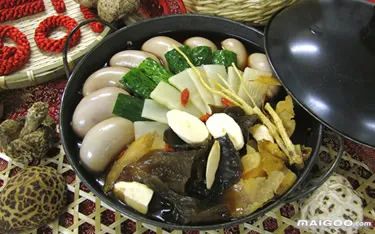
By the Yuan Dynasty, the focus of medicinal cuisine had shifted more towards the dietary aspects for healthy individuals, with the created recipes essentially becoming health products. During the Yuan Dynasty’s Yanyou period, the physician Hushi Hui compiled the Yinshan Zhengyao (Essentials of Dietary Therapy), which recorded chapters on health preservation, dietary taboos during pregnancy, and nursing, selecting various nutritious and delicious foods. This work is recognized as the first nutritional science book in China.
In the Ming Dynasty, Li Shizhen’s Bencao Gangmu (Compendium of Materia Medica) included 1,892 types of Chinese medicinal herbs, adding 347 new types compared to previous records, many of which were previously undiscovered or poorly documented foods, significantly expanding the variety of medicinal ingredients available for medicinal cuisine.
It is particularly noteworthy that during the Qing Dynasty, the application of medicinal cuisine reached a peak, with numerous works emerging. Notable texts include Shen Lilang’s Shiwubencao Huizuan, Yuan Zicai’s Su Yuan Shi Guo, Chen Xiuguo’s Shiwumishu, Fei Boxiong’s Bencao Yinshi Pu, Shiyang Li Fa, and Zhang Ying’s Yinshi Shier Huailun. Among these, Wang Mengying’s Suixi Ju Yinshi Pu stands out, documenting 340 types of medicinal foods, discussing their flavors, therapeutic properties, and cooking methods in a concise and practical manner. The dietary therapy and medicinal cuisine of the Qing Dynasty were also widely applied in the novel Dream of the Red Chamber, achieving significant promotional effects.
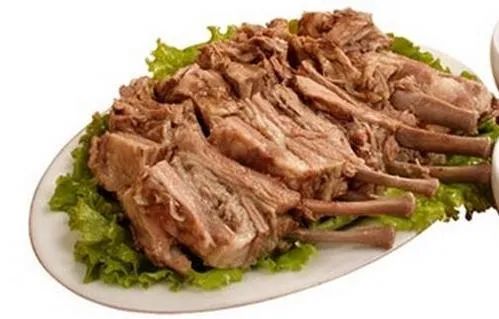
After the establishment of the People’s Republic of China, the development of medicinal cuisine and dietary therapy has made remarkable progress. An independent discipline of medicinal cuisine has been established, numerous specialized texts have been published, journals related to medicinal cuisine have been launched, databases have been created, research institutions and academic groups have been formed, and economic entities related to medicinal cuisine have emerged, along with significant advancements in clinical applications. These events witness the rapid development of medicinal cuisine.
In summary, the emergence and development of medicinal cuisine have undergone a long historical process. It is one of the unique methods of medical treatment and health preservation of the Chinese nation. According to the authoritative work Dictionary of Chinese Medicinal Herbs, which collects over 5,700 types of medicinal materials, there are more than 500 types that can be used as ingredients for medicinal cuisine, highlighting the immense wealth left by our ancestors!

